PKDM 2016 Honda Civic: A Pandora Box Full Of Confusion
It looks like the craze to know more and more about the upcoming Honda Civic 2016 is not subsiding. Every day something new pops up. We at PakWheels tried our best to keep our readers up to date about anything available to share about 2016 Civic X. By now we are confident that you guys know about the new Civic, features, engine or anything related to car’s exterior and interior. Our subject matter for today’s article is something different. From last few days, there are two numbers which are the point of discussion and stuck among everyone; 87 and 91. We will go over it shortly.
Also Read: 2016 Honda Civic In Pakistan – This is It!
The new Civic is not formally launched in Pakistan, but new information keeps on appearing. Honda dealers across Pakistan started taking pre-booking of the new car couple of weeks ago. Some reports suggest that around 5000 cars were booked in the first ten days when the booking started. This is very surprising for the fact that no one has seen the car on showroom floors, and yet people are willing to buy the 10th Generation Civic without even seeing it first.
Also Read: 5,000 Honda Civics Booked In Under 10 days
As expected, Civic will be available in two engine options in Pakistan. All-time tested R18, which is a naturally aspirated engine found in the 9th generation Honda Civic. The 1.8-litre Honda engine produces 141 HP. The big news around the world connected with the new Civic is the release of 1.5L Turbo engine. The 1.5-litre Honda Civic VTEC Turbo produces 173 HP. There were a lot of rumours and speculations about this engine coming to Pakistan. But since it is confirmed that it will available, we will keep our discussion on this topic about the 1.5L Turbo engine.
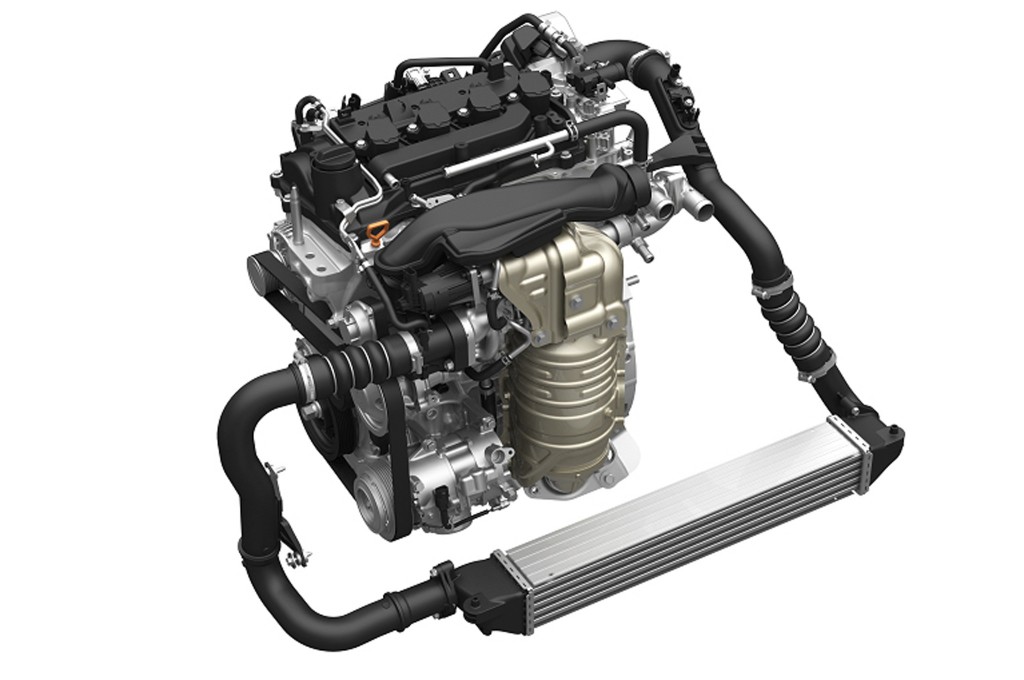 As I mentioned; there were if’s and but’s about the introduction of the turbocharged engine in the 10th generation Civic for Pakistani market. The one main reason is the availability of Hi-Octane grade petrol. I have been reading about a lot of confusion and misunderstandings about fuel required by the Pakistani Civic with 1.5L Turbo engine. I am not an auto specialist but will try to explain it in plain words so that we can remove the confusion.
As I mentioned; there were if’s and but’s about the introduction of the turbocharged engine in the 10th generation Civic for Pakistani market. The one main reason is the availability of Hi-Octane grade petrol. I have been reading about a lot of confusion and misunderstandings about fuel required by the Pakistani Civic with 1.5L Turbo engine. I am not an auto specialist but will try to explain it in plain words so that we can remove the confusion.
Turbocharged engines are forced induction. To increase the performance and output of an ICE (internal combustion engine), air is compressed into the cylinder and its done by a turbine/turbo which is connected to the exhaust from the engine, and it spins with the force of exhaust gases and in return pumps air into the engine. A turbocharged engine can be smaller, but it can still produce equal or more power than a regular naturally aspirated engines. Turbocharged motors are fuel economical provided you drive them with a light foot. Driving them aggressively will make them more fuel thirsty than a bigger naturally aspirated engines.
A turbocharged motor has higher compression ratio compared to NA motor as more air is forced into the cylinder. Petrol is a volatile fuel, and it can burn on its own under pressure. You keep reading and seeing the octane level. People think higher octane implies more engine power. But the fact, octane rating of petrol tells us about the stability of fuel against premature ignition under load that is compression in case of an engine. To get this resistance, oil refineries add various additives during the production of the fuel. We can say that higher the octane rating, more it can be compressed without ignition. As turbocharged engines have a much higher compression ratio. If you use low octane number than required in a turbocharged motor, the air-fuel mix can ignite prematurely in compression cycle before even spark plug comes into action. It causes the fuel mix to burn even before the spark plug ignition. And this is what is called knocking.


Many think that new motors are more complicated, and the ECU [Electronic control unit] just adjusts as per the fuel, thinking if we use low octane petrol in the turbo engine, it will not be an issue. It is not the case. Using a lower octane petrol regularly, over time engine components will start to wear and fail prematurely.
Over time, the turbochargers have become very common. They are available on small economy cars as well. In the past, we have associated hi-octane fuel with high-performance vehicles. But the fact is, even our Japanese 660cc turbo cars need better octane fuel. But there is as such no need for hi-octane fuel in NA cars. You might just be wasting your money on expensive fuel that your vehicle doesn’t even need.
When new Civic was launched in the US last year, Honda told the press that the car can run on the regular petrol. The car’s user manual show the same, “Unleaded 87 or higher required”. It made people think that you can use the same octane fuel in Pakistan as well. But unfortunately, that is not the case. The US measures the octane level in a different way than the Europe or any other place. Simply put, 87 RON petrol in the US means 91 RON fuel everywhere else. Also, you can say that 87 sold in Pakistan is equal to 83 RON in the US.
Image from USDM user manual Turbo Civic
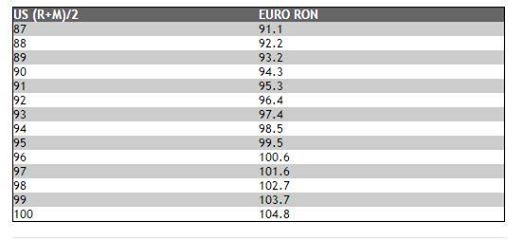
Automakers use two terms when it comes to using fuel, “Required” & “Recommended”. It is always recommended to use that is written in the user manual of your car. If it says required, that means it is the least you need to make the car run without any issue. Your dealership can easily tell if you have been using low-grade fuel. And when you see recommended, it means it is best to use that fuel since it will provide the best possible performance.
Honda Atlas wrote a letter to its dealership dated June 15th, 2016. That letter went viral and caused some confusion as well. It had used both “Recommended” as well as “Only” word in the letter. In car refuelling world both are opposite terms.
It confused me a little more. So is it mandatory or recommended? As you know, pre-booking started on Monday, June 6th and most of the new buyers went for the new 1.5T Civic without knowing the fact that it will need a high octane petrol. Also, this potential RON problem appeared after nine days when Atlas started taking new bookings (when the official letter leaked). According to some reports, Honda Atlas made Rs5bn in cash in 10 days. It appears the potential new Civic buyers are now in jeopardy due to the unavailability of the recommended fuel. Even the leaked photos of pre-booking slip show a warning informing people about the required fuel. The image is posted below. I guess new turbo Civic buyers should start researching how and from where they will acquire the required fuel. The hi-octane is not in stock on many fuel pumps. This also makes your 3 million PKR car limited to metropolitans. Current updates show that even in cities like Islamabad, Lahore, Karachi, and Peshawar, availability is limited or not at all
There is a detailed discussion thread about the 2016 Civic on PakWheels.com forum. Many Honda Civic, enthusiasts and potential buyers are disappointed after hearing the news. They feel cheated by the dealers and Honda. There are those who are thinking to opt for the 1.8l version. Honda will allow a switch before the delivery.
Few potential buyers with pre-booked 1.5 are even thinking to change to 1.8L Civic and sell it quickly instead of cancelling the order. The fuel requirement of turbo Civic has already dented it’s resale value even before it left assembly line and made to roads. In short buyers who opted for 1.5T thinks that incomplete information resulted in a wrong decision by them, and as the advance is now non-refundable, they feel like this is now a forced sale.
Join Civic X Discussion: Pakwheels.com/Civic X
A lot potential new buyers still looking forward getting a turbo Civic are looking into alternative means to handle the issue of Hi-Octane. One such way is adding octane boosters available off the shelves from auto accessory stores. I wish it was that easy, and we could do something like that. These additives or octane boosters are based on magnesium or lead, commonly known as MMT’s. All car companies, including Honda, stringently prohibit using any additives to the fuel. These boosters carry metallic additives which are dangerous and can result in premature failure of spark plugs as well as engine cylinders and the collapse of emission system. There is no substitute for Hi-Octane 91, and you can’t add an additive to boost the octane amount. Also, these octane boosters mention on the packing that they add 5 to 7 point octane. In fact, in reality, the 5 to 7 point implies 0.5 or 0.7. So if we agree and assume, they raise the octane rating it will be 87.5 or 87.7 if combined to regular RON 87. Therefore, please don’t think of mixing an additive/booster in your fuel if you own a Turbo Civic. It will hurt your car over time. Also, you will void the warranty on your car engine and component. Many studies have shown the adverse effects of these Octane boosters on the life and performance of the engine including the related components, especially emission system.
As Honda Atlas is assembly line and engine, transmission and other components are imported and assembled locally, the warranty on the individual parts is supported by Honda Global. So in simple words, your car has an issue with the internal of engines. Honda Global is liable for warranty claims provided the components are treated as per the required terms. So if Honda Global says minimum 91 RON, Honda Pakistan will never say Octane 87/regular fuel. Making such calls can make Honda Atlas responsible for any warranty claims.
Recently we came to know that oil marketing companies (OMCs) and domestic refineries have formed a pact with the federal government which will lead to a partial launch of better quality petrol in Pakistan, but country-wide availability on each and every pump is still a few years away. We might see increased volume of RON 91 fuel on petrol pumps which are already selling. Oil refineries need a to make a significant investment, and there are technological difficulties to do this change and state have currently permitted them to continue their operation. Some refineries will start blending and producing higher octane fuel by this year’s end, but it will be priced high because it will be done by importing the additive material and the production will be limited. It’s also a wide known fact that many petrol stations mix kerosene oil with the fuel further deteriorating the quality of available fuel.
Also Read: Agreement Made For Higher Grade Petrol
All of this has started another debate and serious discussion about how Honda Atlas handled the launch of the most anticipated Civic in the history of the automobile industry of Pakistan. Honda should have officially launched the car first and making car features, variants and other details public later opening a pre-booking across the dealership network like its normally done. Many who booked 1.5T without knowing the requirement of fuel grade are calling it deception on the part of Honda Atlas. I think it’s time for Honda Atlas to don’t further delay the launch of the Civic and make things public as soon as possible. Buyers right should be guarded, and they should be made well aware of all the facts about a product before it is sold.
In the end, I will throw a question towards my readers; If today Honda Atlas price the turbo Civic same as 1.8L variant.. will you buy it? Keeping in mind the required fuel grade and its availability.

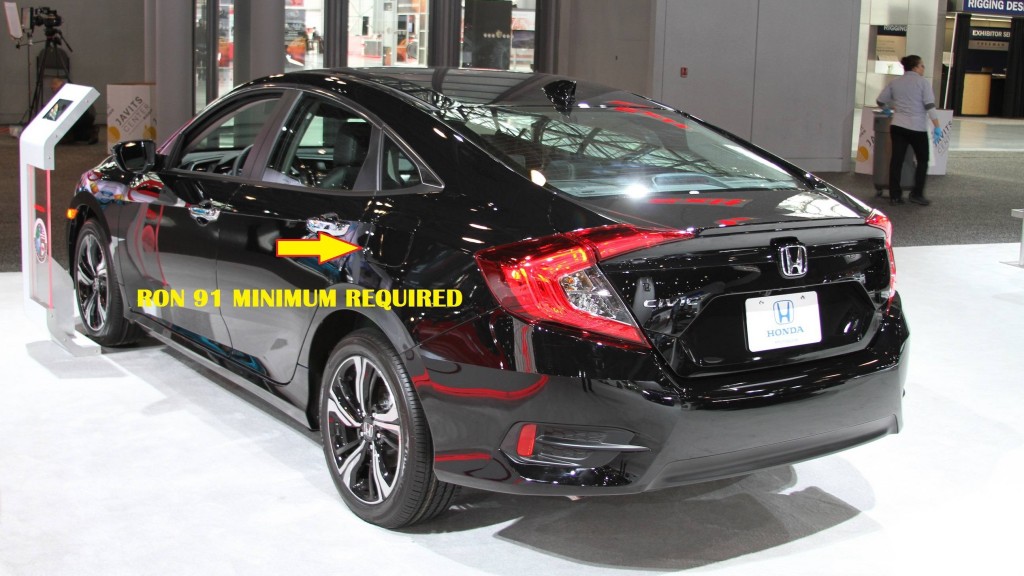
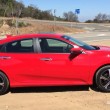
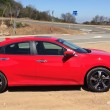
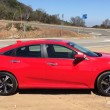
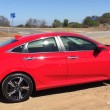
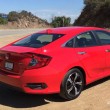
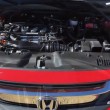
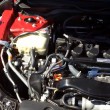
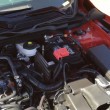
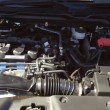
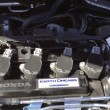
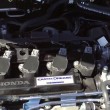
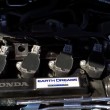
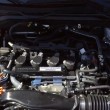

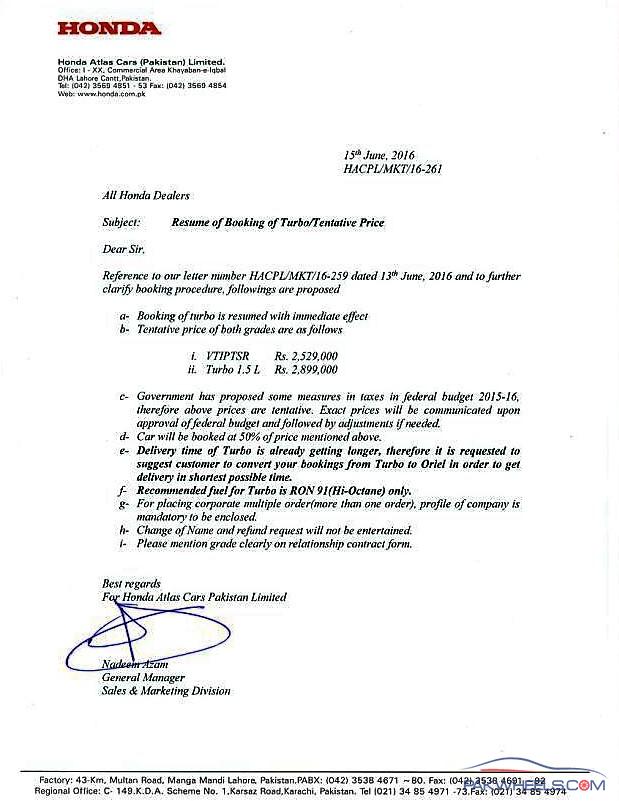

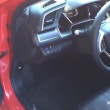
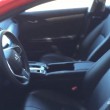
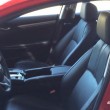
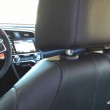
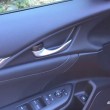
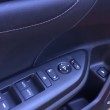
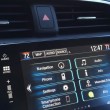
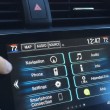
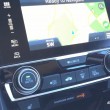
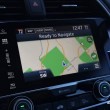
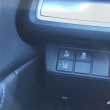
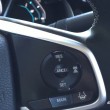
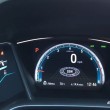
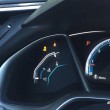
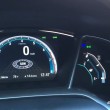
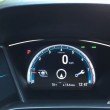
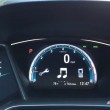
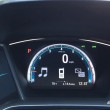
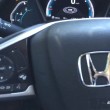

Even if they price Turbo 1.5 lower than 1.8, I would not buy Turbo. It’s not because hi octane is costlier than regular petrol, but the tension about availability is the main factor.
1.5 Turbo is further less attractive because it does not come with Honda sensing package and LED headlights as standard as in other markets in the same price range.
Even 1.8 is heavily stripped down with non-graphical instrument cluster and lack of remote engine start function and an inferior Chinese multimedia system that too at an exorbitant price.
Really good article and Honda Atlas and Honda Global should be ashamed of themselves. This whole fiasco has put me off from buying the new civic even though i had been waiting since it launched in the US. If a company can treat its customers like this before they make a sale i wonder how the customer will be treated afterwards.
Dear Pakwheelers, if any one has information related to availability of HOBC in their surroundings should share that information so that those who are still interested in turbo version won’t face difficulty in refueling. Let’s make things less worrying for our friends who are waiting for their All New Civic X.
Good Article… About the Question No i will not buy even on same price on 1.8L due to the non availability and poor fuel quality in Pakistan. Also there is petrol theft happen every where on petrol pump not putting proper fuel plus the mixture.. Well i will not think about spending this much money on this new Civic right now. Better to Go for Toyota atleast we have better resale value at the end..
Still people are claiming that regular unleaded fuel can be used
Appears like a goof is sitting up there in Honda Atlas Marketing Strategy seat.
Seems like few readers have been answering the question by the writer:
” If today Honda Atlas price the turbo Civic same as 1.8L variant.. will you buy it? Keeping in mind the required fuel grade and its availability.”
My answer is no. Even if they offer the 1.5L for free, I would prefer a less complex, simpler machine which would provide consistent performance in all types of environments (weather, fuel, engine oil, state of repair), would have easy maintenance and and would be comprehensible by those illiterate roadside mechanics.
Previously I have written again & again that Atlas has been successful always in 1600cc. Yet they play with 1800, 1500 and other ideas. It was high time they just put the R16 in it, forget about 1.8 and 1.5T, they would see success.
In fact they can scrap their idea of 1.5T, put a 1.6 in it, don’t even pay back the money to the consumers, but use the remaining money to put useful features in the car which are available in other countries but have been stripped in Pakistan.
————————-
1. The article mentions R18 came with the 9th gen, however R18A1 was introduced with the 8th gen in 2006, that model is popularly called reborn.
2. The tone of the article suggests that knocking can only happen in a turbo engine. Do not be confused, knocking can equally happen in a naturally aspirated (=non-turbo) engine. A common example is the engine of Honda City that comes from 2008.
3. Petrol is a volatile fuel but it cannot burn under its own pressure. In the petrol tank, the petrol lying lowest does not combust or ignite under the pressure of the petrol over it. Petrol can pre-ignite in the situation of compression (and cause knocking as a result), but that does not happen due to its own pressure, rather it happen due to external pressure.
4. Pre-ignition is not called knocking. Knocking is the sound valves make as a result of pre-ignition and expansion of the charge. In fact there is the concept of hi-octane pre-ignition which cannot be heard but still damages the engine in the long run. I request the writer that the write-up is very good, but over-simplification can cause confusion by spreading false or incomplete info, therefore better choice of words could be made.
5. The engine shown in the animation has the 1342 firing order. Interesting.
6. Knocking happens at low RPMs. A quick technique to deal with knocking is to increase the race. Now it depends upon the type of turbo, whether it kicks in at low RPM or at high RPM. For a sports car, the turbo would kick in at higher RPM – in that situation, poorer quality fuel would not cause big trouble due to the additional compression because the compression ratio of turbo engine is lower, e.g. 1:8.5, which is even better from the knocking perspective because the compression ratio of NA engine is usually 1:10 to 1:11.
If the turbo has been installed to make the car more fuel efficient, most probably the turbo shines at 1000-3000 RPM, which I think would be the situation of the 1.5T. This means there would be a lot of knocking in the Civic turbo.
7. If the customers feel cheated, they are right. Before a product launch, product is usually tested by the engineering department. Yet Honda booked the car without informing the customers about special requirements. And they also say the money is non-refundable. Pakistan really needs a strong consumer court.
thanks for your detailed response.
Actually the animation in the middle of article was just to shown for engine mechanism in general. The officail animation about 1.5T is in the end of the article in a YouTube video. Yes knocking happens in any engine and people have experienced it natural aspirated civic engines for 9th generation, pool quality fuel and carbon deposits can be a cause if I am correct. I tried to simplify and just concentrate on turbo version of the engine as its hot topic at this time. Even after all these details many readers have said and stressed again and again that 87 regular available on pumps in Pakistan is Ok to use. May God help them
There’s nothing about vtec in that video???
Technically excellent and accurate write up. Bottom line conclusions are as follows:
1.HONDA HAS CHEATED ITS CUSTOMERS.
2.Rs 5 Billion is not a small amount against advance payments sitting in banks giving off profits, hence such a haphazard launch is by design on part of Honda.
3.Pakistani people are going to buy the 1.5 Turbo even knowing the RON issue in fuel with a mindset as “Lets enjoy the turbo for 02 years and then we can sell it off”
4.Automobile industry is going to keep on cheating the people like this , because we ourselves are cheaters.
The sole purpose of Pakistani’s life is resale.
People marry each other so they can buy possessions which have good resale. People give birth to babies so the babies will become older and invest into things which have good resale. People spend their lives thinking of resale. Presumably people also chant resale-resale-resale a few hundred times everyday as a form of meditation.
High time we passed a resolution in the parliament and institute resale as part of the national objectives plan. Maybe even an amendment to the constitution to include resale.
Just one work for you LOL…. This is fact for our Pakistani market bro…
Honda Atlas is giving wrong fuel recommendation for 1.5 turbo. Check honda canada website the fuel recommendation for both 2.0 lit and 1.5 lit is regular. Regular means RON 87 as per canadian recommendation. Which is the similar grade of regular avaiable here. A person in this article claims pakistani regular is RON 87 but as per USA std it is 83 RON. I still don’t get it on what basis these std r claimed. But still why honda wants to kill 1.5 turbo even before its launch. Their after sales r not trained enough to handle or honda pakistan don’t want to do any expense on training.
Sir.. USA and CANADA use R+M/2.. I fill my car with fuel here every few days. In North America it’s not called RON, it’s AKI , anti knock index.. US use diffrent formula for rating which is average of road octane and motor octane. Which makes it around 4 to 5 number lower in US and Canada. The conversion table is there in the article. 87 in US is not 87 in Pakistan.
Fazal Wahab Great Job
goof name is nadeem azam
anything is possible in pakistan